The best part of St. John is walking through the forest – and then seeing something like this appear through the trees:
On our first day on the island, we did our first hike on the Cinnamon Bay Trail, which begins at the remains of an old sugar factory dating back to the 1700’s.
Though Christopher Columbus is credited as the first European to discover the Virgin Islands (he named the island group “Eleven-Thousand Virgins” after the martyrdom of St. Ursula’s followers), it was the Danish who first inhabited the island in 1718, when the The Danish West India and Guinea Company was founded there. The Danish government later took control of the colony, along with nearby St. Thomas and St. Croix in 1754.
Because the island provided the perfect conditions for growing sugar cane, sugar plantations were soon abundant throughout St. John, with slave labor being shipped in from Africa. The local Carib and Arawak populations were also enslaved to the point of extinction.
The Cinnamon Bay Estate, pictured here, was one of the most prosperous sugar cane plantations on the island. The cane’s juice was squeezed out between iron rollers powered by a horsemill, then flowed into a boiling room. The enormous boiling room chimney still remains:
In 1903, the Danish West India Plantation Company bought Cinnamon Bay and began growing bay rum trees to produce bay leaf oil, which was used in popular colognes and lotions known as St. John Bay Rum. The old bay rum distillery still sits nearby in the forest, covered in moss and vines:
The venture was successful, and other landowners followed suit. Today, bay rum trees are plentiful on the island. Fun fact: if you chew on a bay rum leaf, your tongue goes numb! Try it if you go, it’s a strange feeling.
Collecting bay rum leaves was a difficult process, in which workers (often young children) would climb trees and carefully remove the leaves, for a salary of about 8 cents per 65 pound bag.
A short distance away are the remains of the old Cinnamon Bay Estate House, in which the owners and managers would have lived. It was last occupied in 1968. Remnants of the front staircase are still visible in front…
Below, a rendering of what it would have looked like. There were few “greathouses” on St. John; often, overseers were hired to keep a watch on operations while owners lived in St. Thomas or abroad.
As we continued on through the forest, we quickly began to encounter St. John’s wildlife. Purple and red colored hermit crabs were skittering about everywhere (they’re easy to find – just listen for the sound of falling rocks, and you’ll most likely find a group of hermit crabs walking/rolling down a hill).
Also creeping through the jungle were gongolos, which you probably know as millipedes.
Unlike the pinchy centipede, the millipede is actually very shy and doesn’t bite. However, when scared, it will secrete an iodine-like substance (the orange stuff seen below) that can cause temporary blindness. An island phrase has it that the gongolo “will pee in yoh eye and blind yoh!”
And then, the spiders:
For all you arachnophobes, the good news is that St. John’s Golden Orb spiders cannot hurt you (I verified this with numerous sources). Even if you hate the things, definitely take a moment to check out their orange-striped legs. Golden Orbs spin huge, beautiful webs – lightly touch one, and you’ll see how strong they are.
Finally, these little lizards are EVERYWHERE:
So what is the most dangerous creature on St. John? As far as I’m concerned, the donkeys:
Yes, that is a donkey looking in my car window. And yes, that is a donkey lying in the middle of the road at a very sharp turn:
Once the principal form of transportation on the island, St. John’s wild donkeys are descendants of domestic donkeys that escaped or were released into the wild. They are usually found in groups numbering three to five. Also, they sometimes chase your car:
Walking the Cinnamon Bay Trail, it was amazing how the foliage could obscure signs of past civilization. Though little can be seen in this picture…
…pass through the trees and you’ll find yourself in an old Danish Cemetery dating back to 1836.
Buried here is Anna Margarethe Berner Hjardemaal, wife of a former owner of the Cinnamon Bay Estate (then called America Hill). Born in 1785, she died just two years after her husband bought the plantation in 1836.
It is believed the nameless tomb beside Anna’s was originally intended for her husband, Nicolai Hjardemaal, who was ultimately buried on St. Thomas in a much nicer cemetery. Five smaller unmarked tombs sit in the rear of the plot:
Some of my favorite ruins were those that have become a part of the forest itself:
Pictured here are the scant remains of the Josie Gut Sugar Estate, located much deeper in the island and dating back to the early 1700’s. Very little is left, though a boiling room and a horsemill are still identifiable. Below, a staircase to nowhere:
A tree, using the 18th-century wall for its roots:
One of the coolest features about these walls is that, if you look closely, you’ll see brain coral set in amongst the stones and brick:
Brain coral was very useful as a building material, as it could be easily cut when still wet to fit unusually-shaped areas. It was then put in the sun to dry, where it would harden.
Another wall, slowly being reclaimed by the forest:
We visited the Josie Gut Estate as part of the National Park’s excellent (and free!) 3-hour walking tour along the well-maintained Reef Bay Trail. Among the highlights were the numerous edible plants found along the way, from guava berries to lime trees (rub the leaves on your hands for a nice scent!) to, er, fruit off the Stinkin’ Toe Tree:
Better known as the West Indian Locust, its seed pods have a very musky odor, hence the comparison to stinky toes. Ignore the smell, and I’d compare it to eating an insanely dry banana – quite good, actually!
We took a short detour from the Reef Bay trail to a secluded pool about a mile from the trail…
…fed by a gorgeous, 40-foot waterfall:
Here, you can find an incredible remnant from St. John’s pre-Columbian history: a series of mysterious petroglyphs carved into the rocks:
Though no one knows for sure who made the petroglyphs, they were most likely left by the Taino, the island’s indigenous population prior to the arrival of Columbus in 1492.
The Reef Bay Trail ends with some of the best preserved ruins on the island, the old Reef Bay Bay Sugar Mill:
In 1855, the mill was converted to steam power after slavery was outlawed on the island, the first of its kind.
In 1864, William Marsh, then the manager of the plantation, purchased the operation at public auction. By the early 1900’s, his plantation stretched across the lower valley, with coconut palms, fruit trees, and sugar cane growing in abundance.
Though the mill has been abandoned for decades, you’re not along as you explore the ruins. Just look up…
…and you’ll see quite a number of bats hanging from the rafters:
What’s especially interesting about the Reef Bay Sugar Mill is the amount of rusting machinery still on site. This is part of the original steam-powered sugar cane crushing machine…
…which connects through the wall to the rest of the apparatus. In 1908, a fifteen-year-old girl was crushed in these gears, which caused many of the workers to believe the mill was haunted.
Another rusted portion of the steam engine:
Two large gears lying nearby:
Ultimately, a depletion in soil nutrients from sugar cane overgrowth, coupled with the introduction of the sugar beet in Europe, led to a decline in island sugar production. Most of Reef Bay was sold to Rockefeller’s conservation project in 1955. Below, where large kettles of sugar cane juice would have been boiled:
Fun side note: when you come to the end of the trail, you’ll find a pair of restrooms. In the 1960’s, Ladybird Johnson was given a tour of the Reef Bay Trail by the a park ranger. Upon reaching the end, she asked where the bathrooms were – and was politely directed toward the bushes. Johnson later donated the money to create these restrooms.
Not all of St. John’s ruins are hidden in the jungle. The Annaberg Sugar Plantation, establed in 1718, is on a hill overlooking the bay, and features some really impressive buildings…
…including a 40-foot windmill, once used to crush sugar cane:
What you’ve seen is maybe 12% of what St. John has hidden within its National Park. Looking back, I’m still kicking myself for all the places we didn’t get to visit, including the ruins of an estate house with incredible views at the top of America Hill (in our defense, we tried to go, but a wasps nest had fallen in the middle of the trail, and we couldn’t get around it).

But the National Park doesn’t end at the coastline. In 1962, 5,650 acres of underwater land were added to the Park, and what you’ll find there is unbelievable.
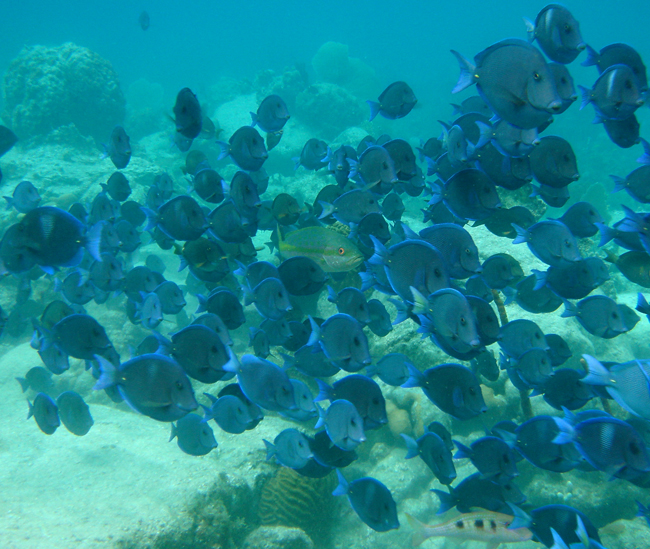
Before St. John, I’d never gone snorkeling, and always secretly assumed it was the wimpy option for people who didn’t have a SCUBA license. Turns out, I was really, really wrong.
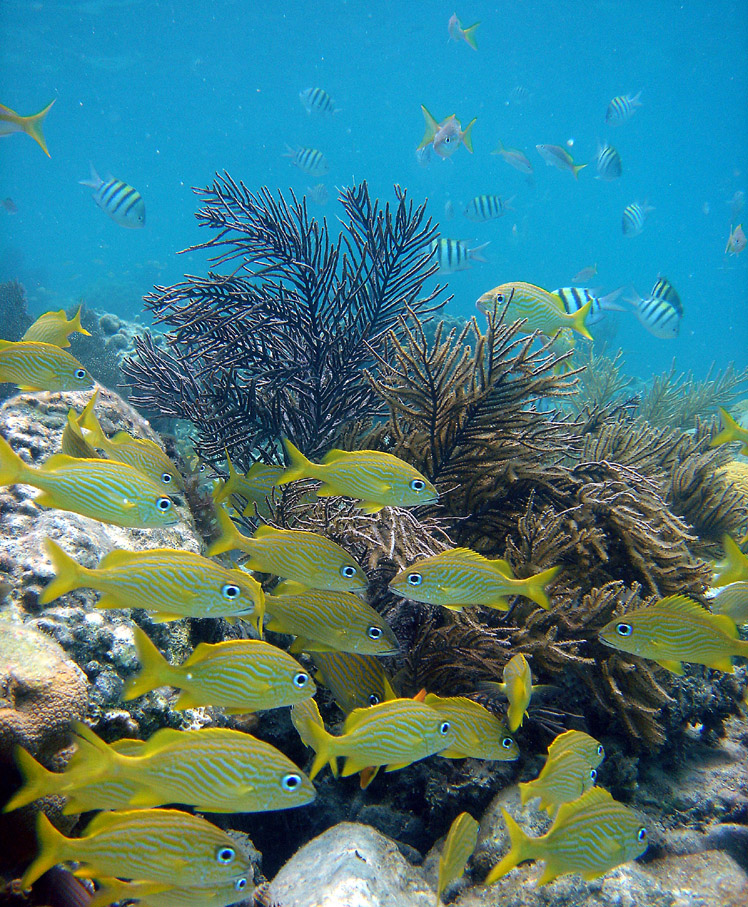
Unfortunately, I decided not to risk my camera in a cheap underwater rig, so I don’t have any pictures to share. These are from the National Parks website, but honestly, photos don’t do it justice. To actually see these fish swimming past your mask was like going to another planet, and I probably spent half the trip face down in the water staring at octopuses, sea turtles, sea urchins…
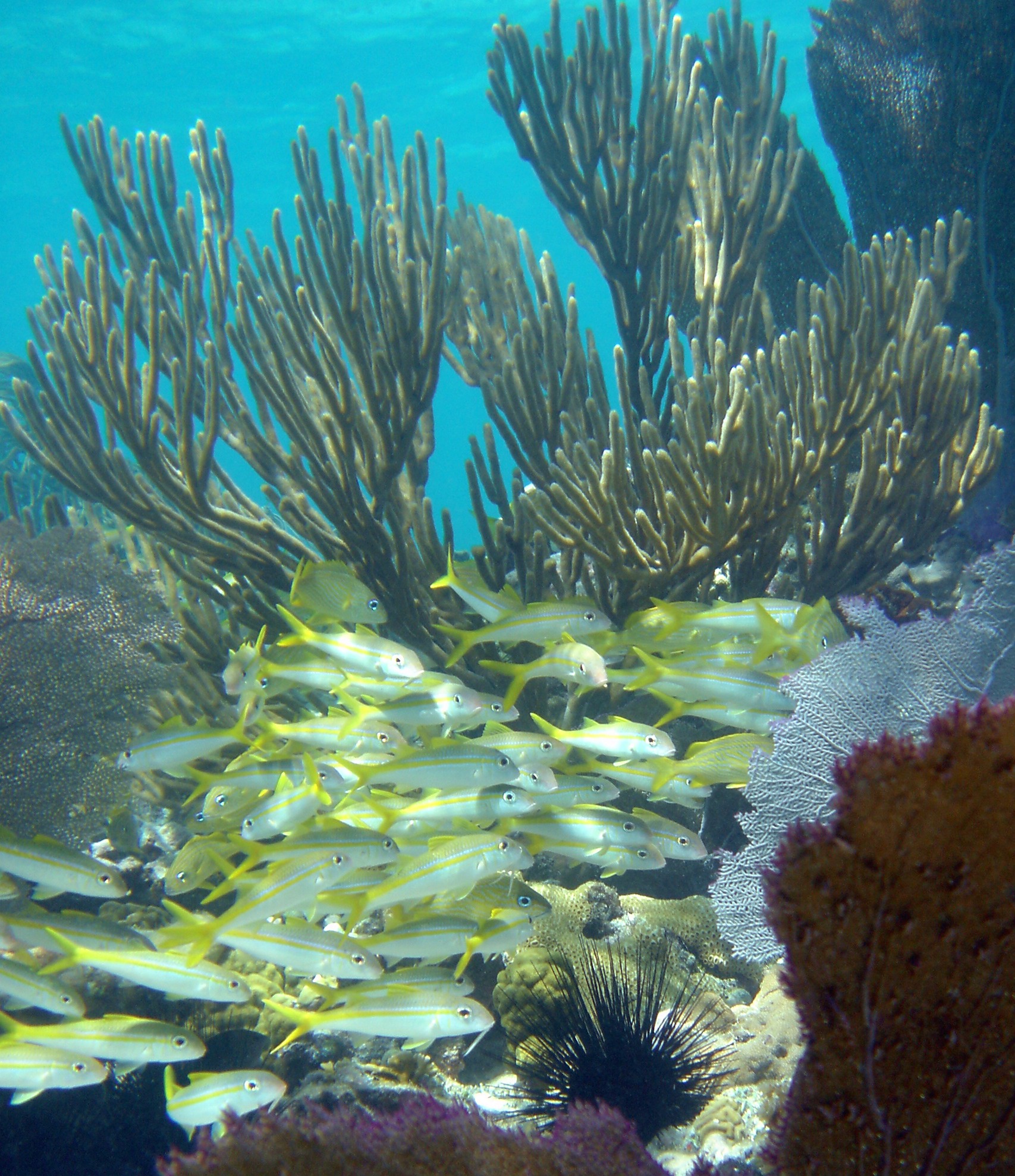
Sadly, there’s one historic St. John property that can no longer be visited: the 1960’s underwater NASA lab, Tektite, which was originally located in Great Lameshur Bay on the south-eastern side of the island:

The purpose of the experiment was to study the effects of living underwater for long periods. The first group of “aquanauts” entered on February 15, 1969, and remained until March 18, 1969, setting a new record.

What really interests me is the facility, which consisted of two 18-foot towers connected by a tunnel. In addition to a lab and bunkhouse, the Tektite facility also had a full kitchen complete with blue window curtains! I’ve been trying to find a picture of the kitchen (is that a harvest gold fridge??), but all I can turn up are artist’s renderings.
Sadly, the Tektite lab was removed in 1970 and later scrapped for metal. This is exactly how I’d design an underwater lab window:
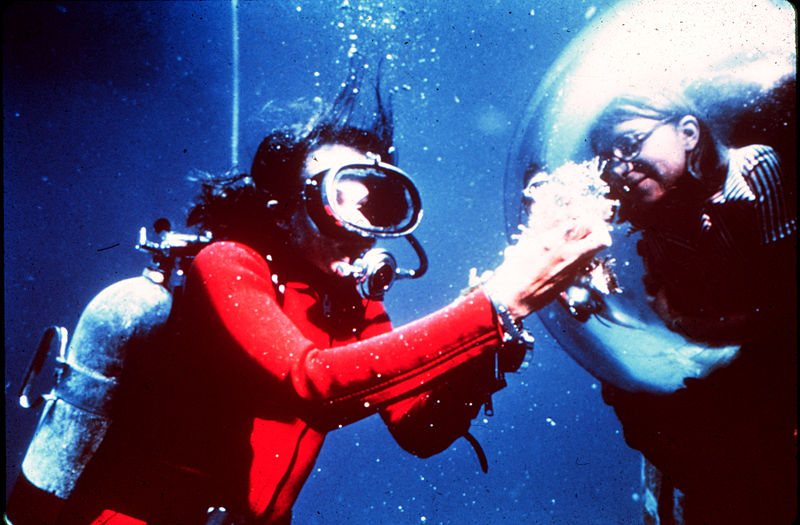
I’ll say it again – when my girlfriend and I booked our trip for St. John, we literally thought we were in for seven days of this:
Clearly, we were way off the mark (though we did spend a lot of time at the beach too!). Hopefully I’ve provided a slice of what St. John really has to offer the intrepid traveler here.
One last thing: if you’re planning a trip to St. John, there is one guide you need to buy:
Written by Gerald Singer, St. John Off The Beaten Path tells you everything you need to know, from a full list of trails and access points, to the least crowded beaches, to the most impressive snorkeling spots. Like the best guide books, it reads like a love letter to the island, and will have you excited to explore months before you finally arrive.
Coming on Monday: Our brief (and sort of depressing) adventures in St. Thomas and The British Virgin Islands!
-SCOUT
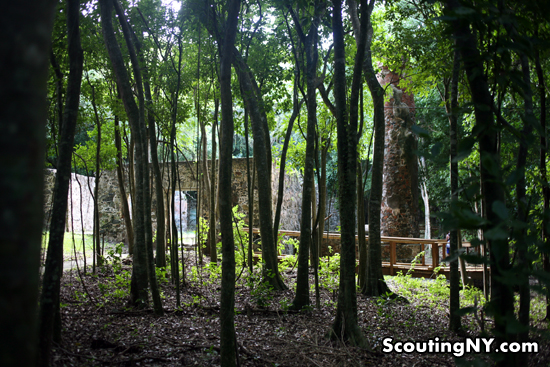
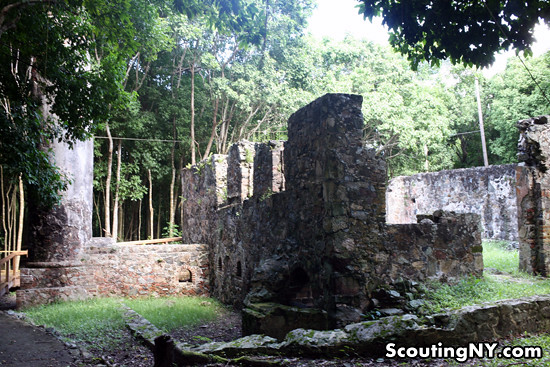
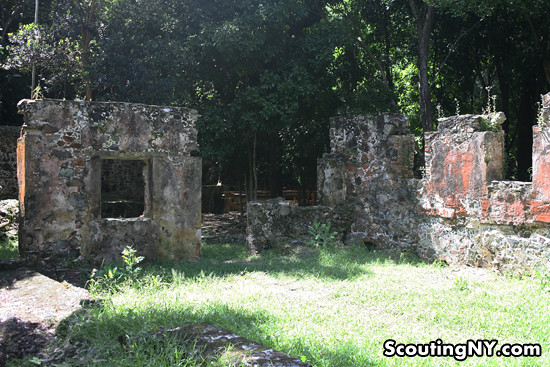
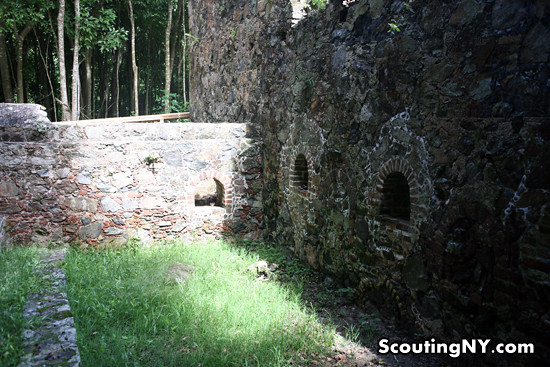
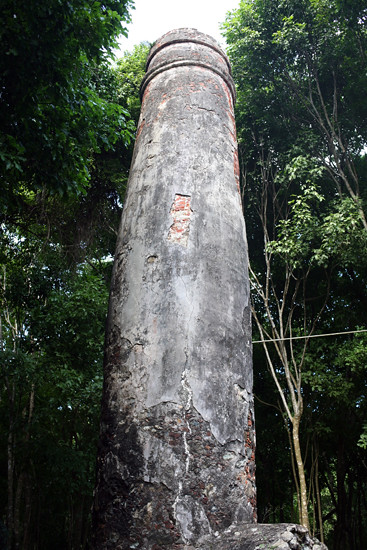


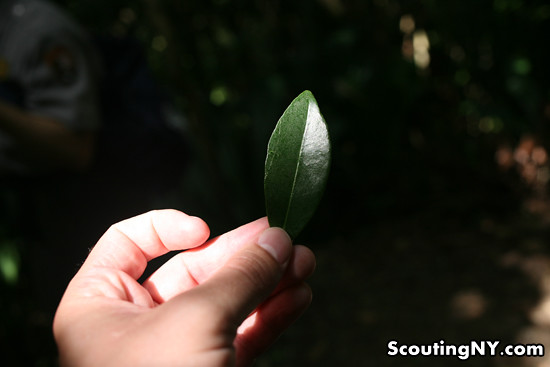

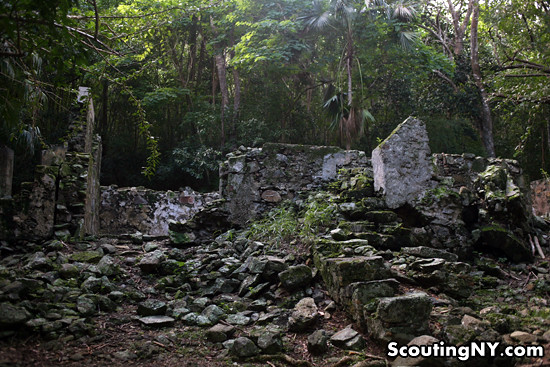
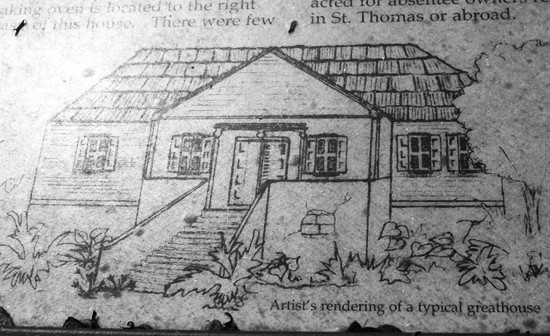
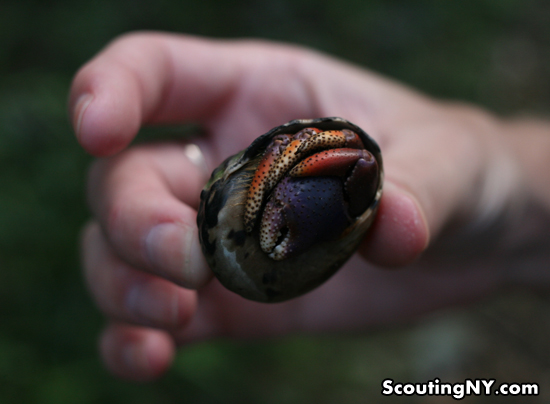
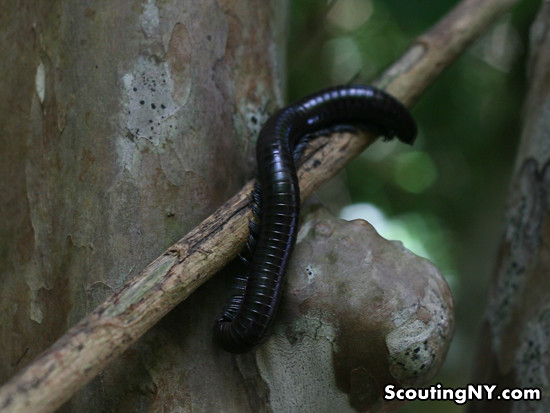

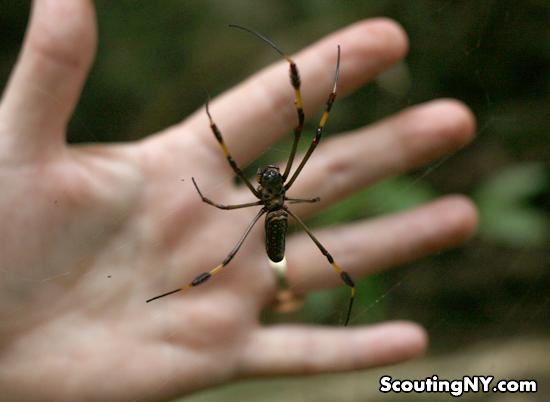




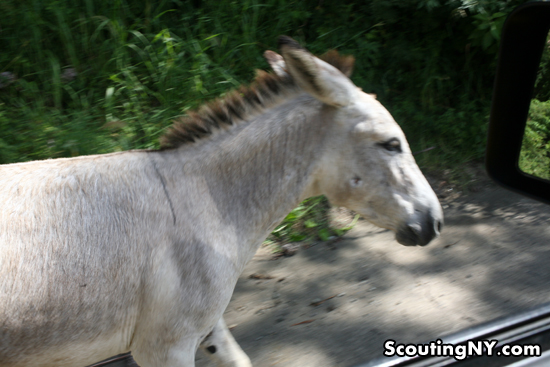
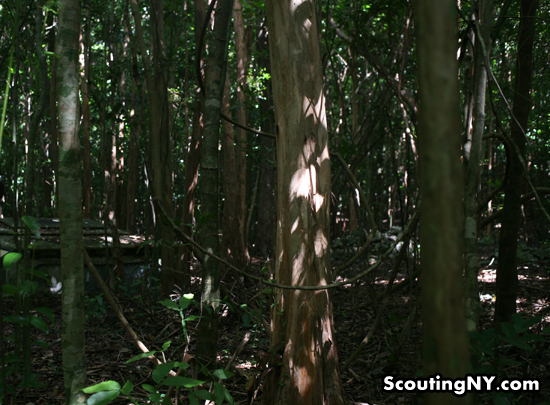






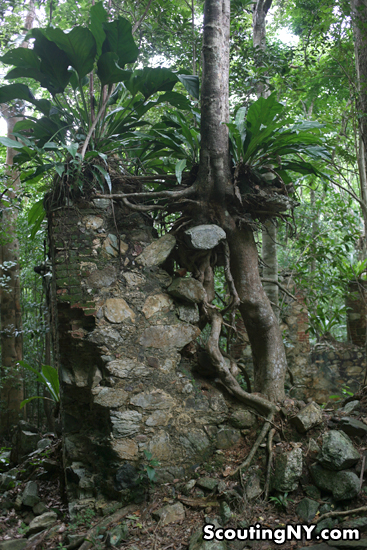


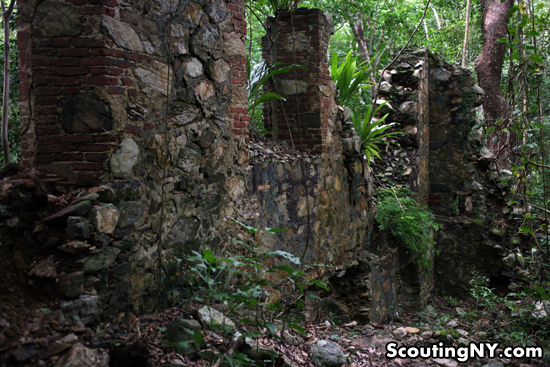
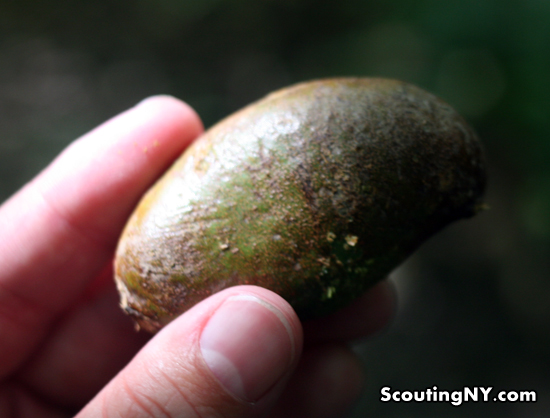
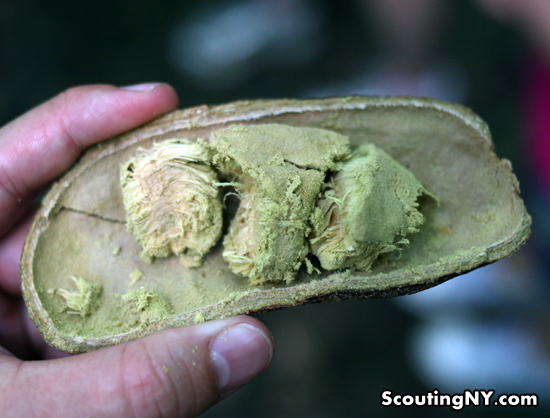

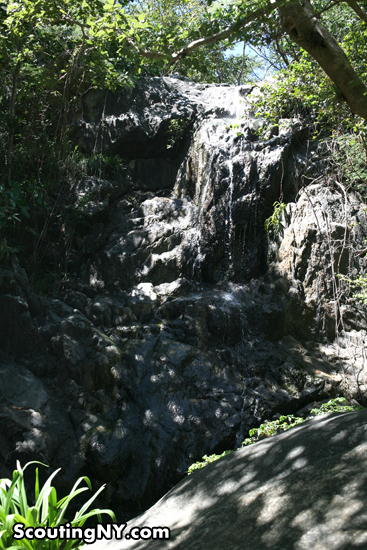
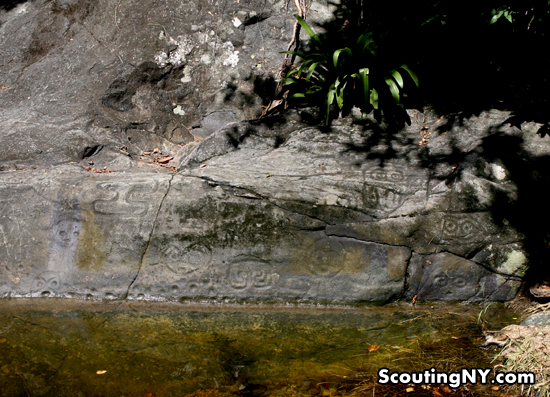

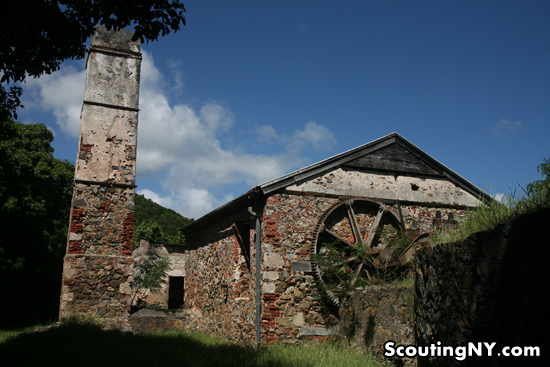
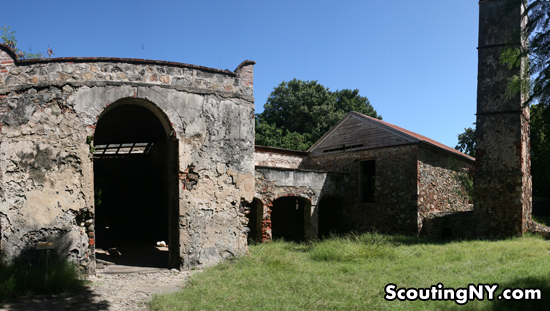

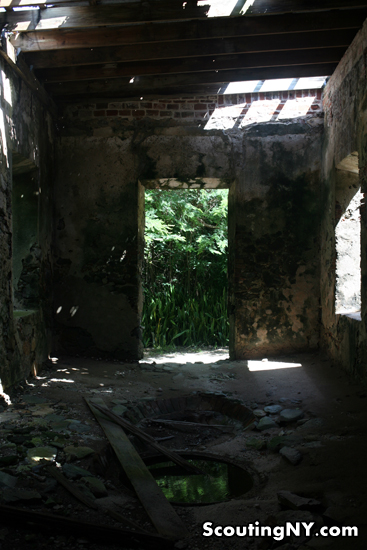
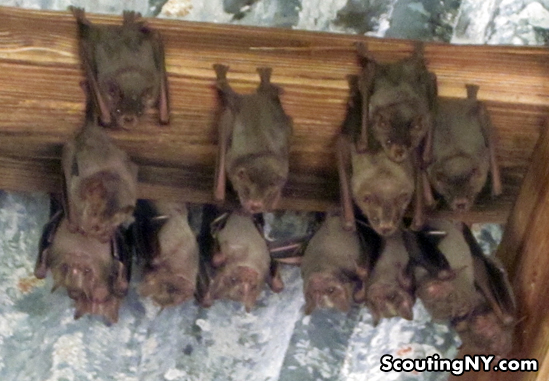
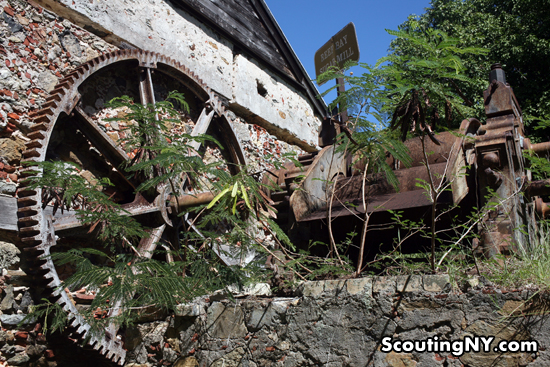
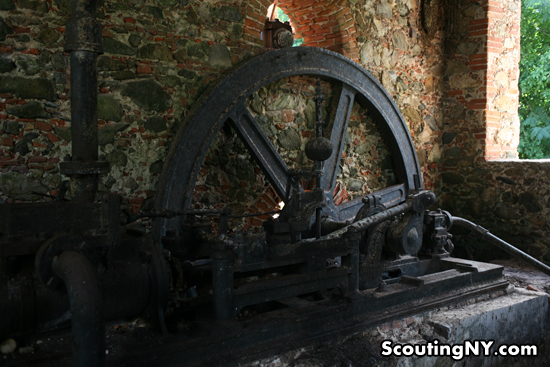

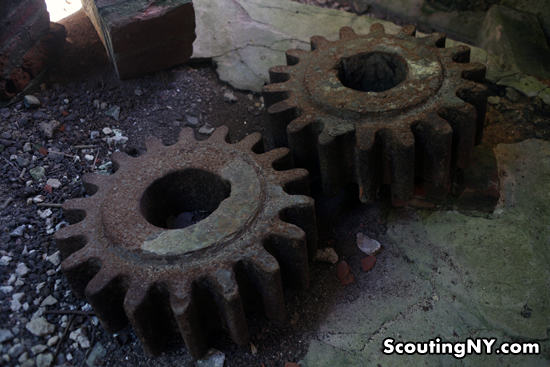

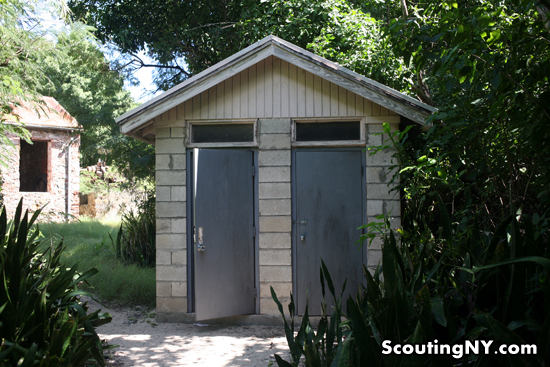

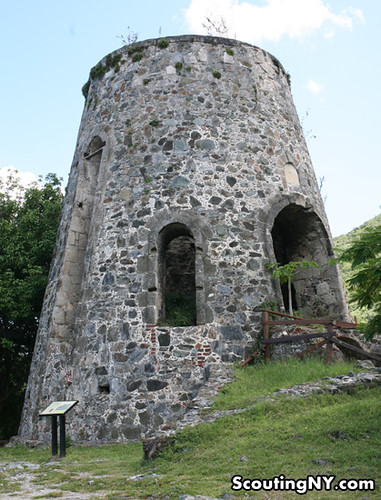

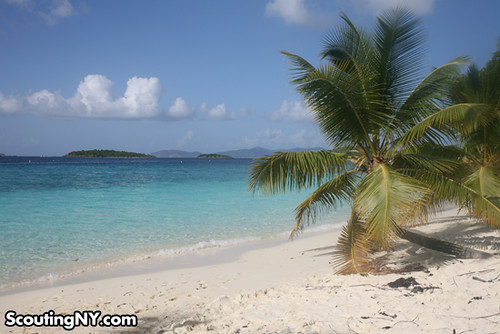


Great stories man, thanks!
Awesome article, really enjoyed this!! Amazing photos, must have been great to see!!! Thanks for sharing!
I work from New York as an art director for a monthly publication on St. John, “Sun Times Magazine,” and our feature article this month is on the story of those aquanauts! Your pictures of the ruins and the beach (Solomon?)remind me of such awesome times I’ve had exploring there – though I’m also reminded of all those creepy crawlies! Next week I’ll be checkin out Grand Cayman – here’s to hoping it has the same potential for learning and adventure. http://www.facebook.com/SunTimesMag http://www.stjohnsuntimes.com
Thanks for these ‘out-of-district’ articles! I went to St.John two years ago. Previous to our arrival on the island I had read about the cinnamon bay trail and was really interested in it, but then found myself unable to hike anywhere in 85 degree weather with 100 percent humidity than straight to the beach. I spent most of my time with my head face down in the water, looking at the world below and loved it!
I remember looking for a sunken crashed airplane wreck for an afternoon that was mentioned in a guide book, trying to snorkel in ‘a grid’ with my husband, but besides old anchors and lots of sea life we never found it.
Also, I did put my (not expensive) camera in a heavy duty ziplock type of bag called ‘aqua pac’ and was able to take really nice pictures with it!
Thanks Scout, that was interesting to say the least. Thanks for sharing your journey. Great photos!!
Hey you forgot to mention the mongoose! I was just at Caneel Bay and they’re everywhere. Especially in the late afternoon. Interesting story about them – from http://www.stjohnbeachguide.com/Mongoose.htm
“The history of the mongoose in St. John demonstrates the usual result of man’s interference in the natural order of things. The Danes brought mice and rats to these islands in the ships coming from Europe and Africa. The mice and rats ate or spoiled large quantities of the valuable sugar which the planters had been so painstakingly cultivating.
The mongoose was brought here from India to control the rat population. Unfortunately the rats in the Virgin Islands are nocturnal and live in trees during the day. They were therefore able to eat as much sugar as they wanted by night, while the mongoose were sleeping and were safe, during the day, from the mongoose, which cannot climb trees.
The mongoose did have a great impact on other species, though. Mongooses sought out chickens, ground nesting birds and their eggs as well as turtle, lizard and iguana eggs. The rats meanwhile were free to eat the planter’s sugar and the eggs of tree nesting birds.
The mongoose became a nuisance for farmers and an environmental problem. This was officially recognized at least as early as 1936. In that year there was only one sign posted in all of St. John. It was nailed to the palm tree nearest the town dock in Cruz Bay. It was signed by the Government Secretary and embossed with the government seal. It announced a bounty, dead or alive, for mongooses. Fifteen cents for a male and twenty five cents for a female.
There is an old Virgin Island saying: Mongoose say: “If I had a cent, I would leave this island” Chicken say: “If I had a cent, I would lend it to you.”
There’s also large tarantulas that live in burrows during the day in the forest and those huge waterbugs or palmetto bugs that are in the tropics.
Great scouting job. I spent a lot of time in the Caribbean when I was in the Navy and now live in a beach community in Florida and can safely say that life is a beach although the hikes look like the kind of thing that would be a fun thing to do.
Hey Scout… really enjoying these posts. Abandoned ruins in the middle of the woods are among my favorite places to explore, or just to meditate. And yeah, snorkeling is TOTALLY AMAZING!
AMAZING. What is yours, a sixth sense?
You can always find some treasures, compliments!!
There is a little sandwich restaurant in the middle of the island with a good view of the back bay and the mountains. The serve bottled beer and have a little colony of mongoose right under the viewing window. They used to have a little gift shop, and may again by now.
The waitress/sandwich maker/manager had a bottle of Siracha chili sauce which she wouldn’t share as it was her personal property that she had to special order and have brought over on the mail boat. This was before Siracha became popular in the ‘states. She explained that essentially everything had to come to the Virgins by boat, so it was very expensive. The only actual real crop is coconuts and people.
So many interesting stories and facts! Well done! Thank you!
I recall that a the bottom of a hill, below one or another of those abandoned sugar mills, was a small collection of huts, with a National Park Service sign that said “worker’s housing”. The tour guide (who actually worked for the NPS) said that they were actually slave huts, but the Park Service decided to soften the labels
We went here for our honeymoon in Nov ’12. Unfortunately we only did the short cinnamon bay hike. Rum and beaches had the monopoly on us. We’re planning to go back as soon as possible.
I was so blessed to have visited this beautiful place.
We will be coming here as a stop on our cruise. I am wondering how far this ruin is from the ports, is it a paid tour or just guide yourself tour? is it within walking distance?